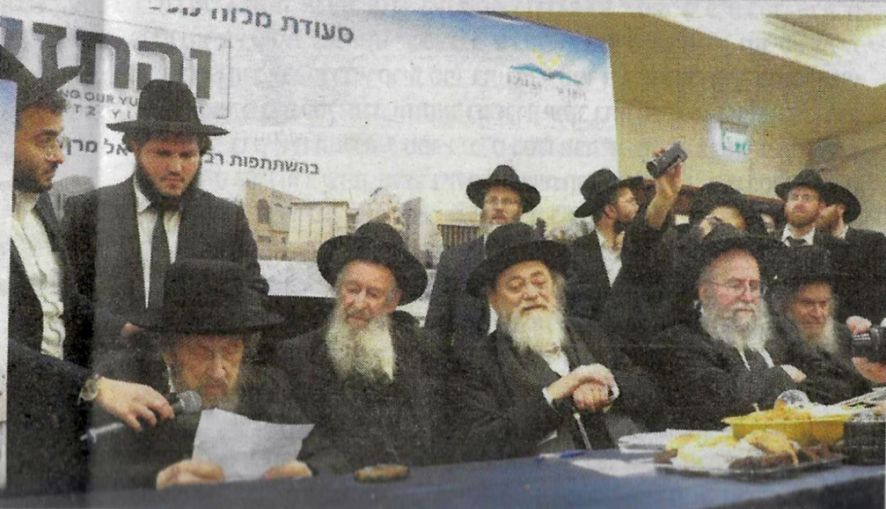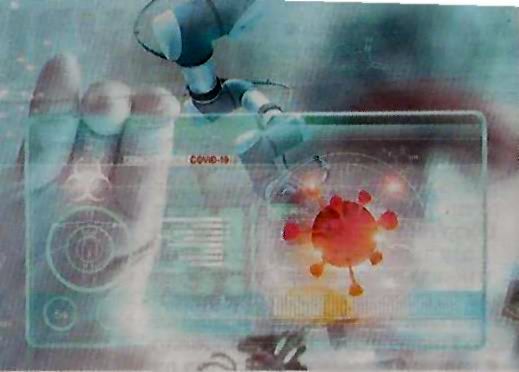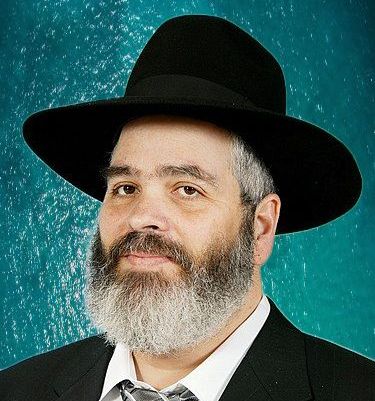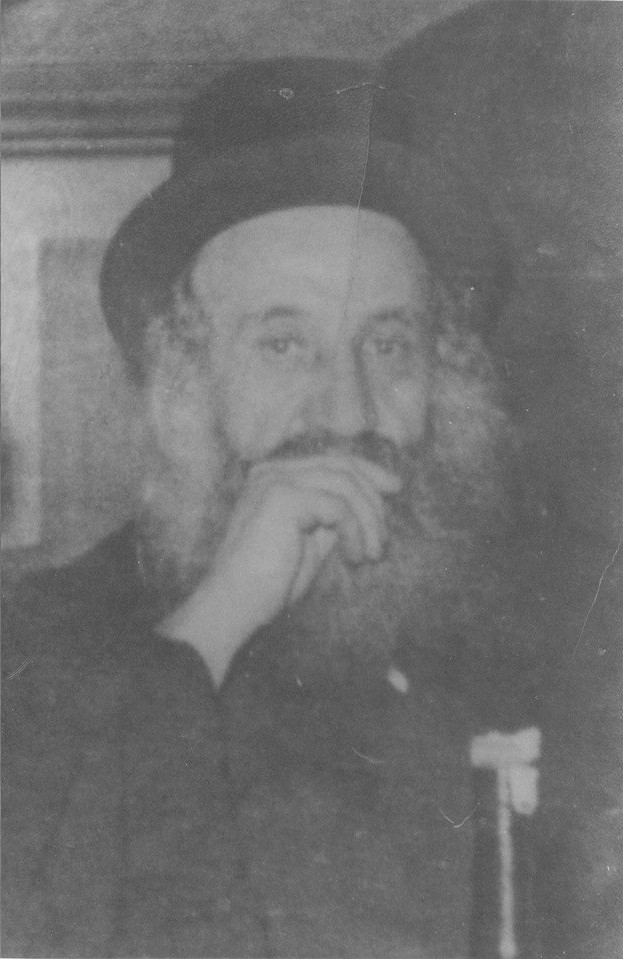  |
|
| |||||
This Google Custom Search looks only in this website. HaRav Dov Lando shlita with a Message to Avreichim from Chutz La'Aretz
Rabbenu HaRav Dov Lando shlita came to Jerusalem on motzei Shabbos Vayechi. The main event he came for was the annual Melave Malka of the Ezras Achim organization that is set up to aid bnei Torah who have come from chutz la'aretz to learn in Eretz Yisrael. Rabbenu went to Pisgat Zeev and Bayit Vegan as well as to the Ezras Chaim event.
Rabbenu went to the Succat David Hall in Yerushalaim for the central event of the chizuk initiative which included a Melave Malka for thousands of yeshiva students and avreichim from abroad who live in Yerushalayim, to uplift them and hail their praises in these turbulent days.
These students encounter special difficulties, having left their families and a high standard of living in order to immerse themselves in Torah study exclusive to Eretz Yisroel and the rarefied, holy atmosphere in Eretz Yisroel, in spite of all the hardships involved. Rabbenu decided that special attention was deserved by those who identify with: 'I choose the Torah of Your mouth above thousands of pieces of gold and silver.'
No one expected this sort of side effect from the fighting in Gaza. The Israeli Association of Infectious Diseases is carefully following one unexpected phenomenon: those wounded in Gaza are coming into the hospitals for treatment with fungi and bacteria that are drug resistant. In one tough case an imported fungus resulted in a tragic end for a soldier who was seriously wounded but succumbed while in intensive care in Ashdod.
The soldier, who was critically injured and had lost a lot of blood, was evacuated by helicopter. The soldier was injured in his limbs which brought them into contact with the contaminated soil so that the fungus found a way to get into his blood stream. The doctors fought for his life, but the infection continued to spread. The doctors tried everything at their disposal, including experimental treatments, but nothing worked.
The soil in Gaza, it seems is full of bacteria, spores of fungi and molds...
Antisemitic uprisings in Iraq took place seven years before Statehood, in the midst of the European Holocaust, influenced by Nazi propaganda, but hatred against Jews stems from envy. Even when Jews were at a nadir, they still remained a target of jealousy by the world nations as being the Chosen People, and most assuredly, when they were successful.
Here is a quote from HaRav Shlomo Zalman Klein, one of the renowned rabbonim of Transylvania (as told to HaRav Yitzchok Roth by an esteemed figure who knew him personally) from his work "Likutei Shlomo." Alas, this work was published by his son, grandfather of the head of the political party (Yair Lapid), "Yesh Atid", as a Shabbos Hagodol sermon in his city in 5672:
"As witnessed by the actions and libels of antisemites, it is apparent that they do not contain an inkling of truth; these are generated from pure jealousy which feeds the hatred...
This major series of articles about the heroic rosh yeshiva HaRav Moshe Schneider whose talmidim, both Ashkenaz and Sephardic, went on to great achievements, was first published in 1994.
Part IV
In the first three parts, we learned of HaRav Schneider's growth and early education, and how he achieved the seemingly impossible by founding a high-standard yeshiva in Memel, Germany, until the first World War threw life into a turmoil. Eventually, he moved to Frankfurt at the end of the First World War. There he was concerned for the spiritual preservation of the East European Jews who found themselves in Germany and he also did what he could for the native German Jews. He soon founded another yeshiva there, that again functioned at a very high level. But the end came.
If in heaven they have a special department for those courageous Torah disseminators who established yeshivos in spiritually empty vicinities against mighty odds, Rav Schneider will have an eminent place there.
And if there is a special department for the brave-souled who cried out, "Give me Yavne and her wise men!" at a time of bitter destruction — Rav Schneider will have a distinguished spot there.
And if there is a special department for those who revived Torah study at a time when it was almost lost and forgotten—Rav Schneider will be in the front row there too.
Rav Schneider was truly among the main disseminators of Torah in the last century. An unusual and dynamic individual who transplanted Torah and made it flourish in spiritual wastelands where no one believed it was possible, he did the painstaking groundwork that enabled the barren atmosphere in England and France to give way to the dozens of yeshivos, religious institutions and frum communities that are in existence today.
HaRav Schneider was a man whose entire focus was in the yeshivos which he established, and in his love for Torah, for which he lived. He was not well-known in the various cities where he resided, and, in keeping with his modest personality, his accomplishments for Torah were not fully appreciated in his lifetime. But the love for Torah and mussar which he instilled in his students produced mighty talmidim who changed the face of postwar European Jewry.
He erected his yeshivos in places that defied logic. When his yeshiva was forced to disband or close, he tirelessly set it up again somewhere else. His institutions seem a bit like a house of cards that collapses again and again, but his reservoirs of bitochon and mesiras nefesh stood him in good stead to mobilize his next initiative.
In No-Man's-Land
...
Rain and Kinneret Watch by Dei'ah Vedibur
Staff
Our weekly report of the rain and the level of the Kineret -
Winter, 5784.
* * *
Outstanding Articles From Our Archives
Opinion & Comment
by R' Refoel Berelsohn and HaRav Michel Zilber
A talk with HaRav Michel Zilber, rosh yeshivas Zvihl and Yeshivas Tiferes Yisroel in Jerusalem, about the approach to learning aggodoh, subsequent to the publication of his work Bayom Derech dealing with topics in aggodoh which were delivered in public addresses by the author every Shabbos.
It seems that in recent years, there have appeared a disproportionate amount of works dealing with the aggodoh in the Torah.
The truth is quite the opposite. All the great figures in every generation who wrote works on halochoh, also wrote works on aggodoh. The author of the Responsa of Maharit also wrote a work of choice droshos called Tzofnas Pa'anei'ach. R' Eliyohu ben Chaim wrote Hanossein Imrei Shefer. The Mabit wrote Beis Elokim. There was a time when no differentiation existed between halochoh, aggodoh, drush and Kabboloh.
This refers to a period hundreds of years ago.
No, that is how it was until recent generations. The Chasam Sofer compiled his own Droshos Hachasam Sofer, as did the Tzlach, the Pri Megodim, the Nesivos, and apparently, R' Akiva Eiger also innovated in drush. What greater and better example can be found than that of the Vilna Gaon, of whom it was said that his greatness in the esoteric branch of Torah was even greater than in the revealed. I don't know who said it, since I cannot conceive anyone who presumed to judge or gauge his greatness, but this was in a generation where the excellence and perfection of the Gra was both in the revealed portions and the concealed portions at the same time.
IN-DEPTH FEATURES
by T. Tzvielei
A fable about a little-white-lie that grew and grew. The Hebrew version of this story won first prize in an open contest for amateur writers.
*
Avigail Itzkowitz smoothed the see-through bag of the dry cleaner. Then she examined the frockcoat inside it.
"M . . . m . . . m. It's spotless," she told herself. "But then why shouldn't it be? Binyomin wore it only at the wedding, and during sheva brochos, two months ago."
But now, a week before Succos, they had decided that it should really gleam, in honor of yom tov.
She thought about Succos excitedly. She had always been actively involved in the preparations for the visits of her married brothers and sisters on yom tov, and during Chol Hamoed had taken charge of her nieces and nephews. Now she looked forward to spending yom tov at the home of her in-laws, which had become her second home. It was a wonderful, warm home, and she felt like a family member there. But still, she wasn't fully familiar with the many fascinating aspects of its management.
For example, she didn't know how their succah looked, and whether they would decorate it with standard, store-bought decorations, or with original creations. But what really bothered her was what to bring her mother in-law in honor of the holiday.
|
|||||



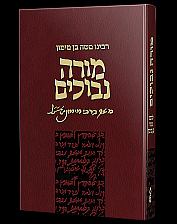
.jpg)
